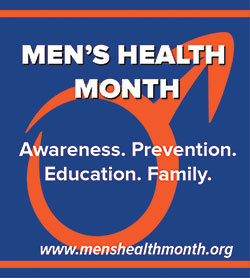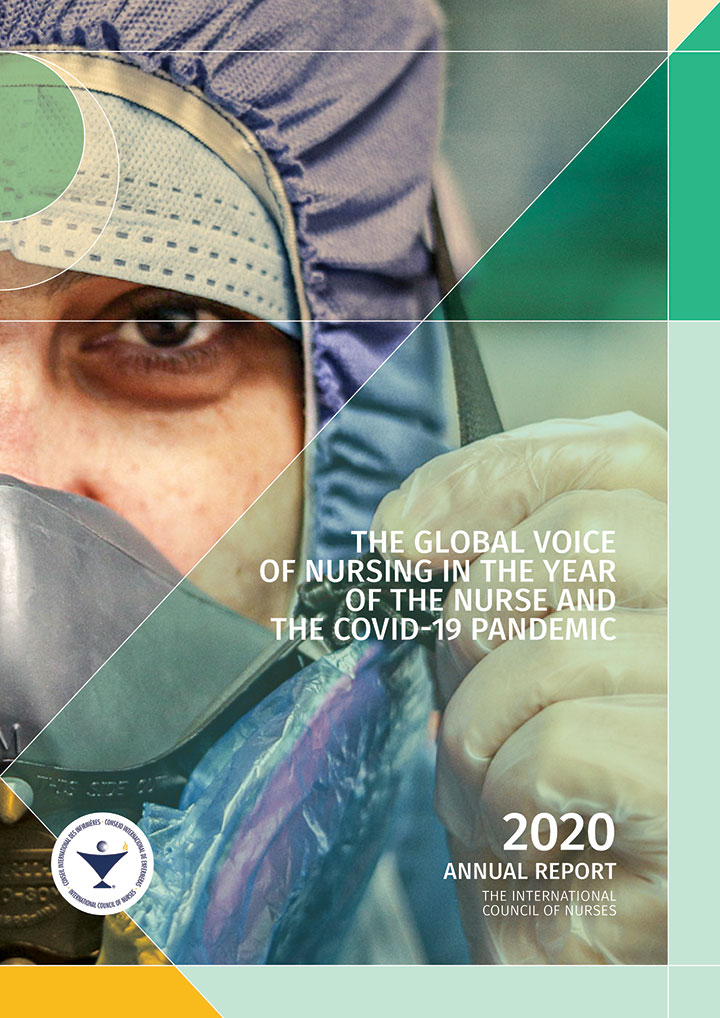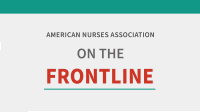ICN Annual Report looks back on an extraordinary year
The 2020 International Council of Nurses (ICN) Annual Report covers a momentous year in the organization’s history. While the International Year of the Nurse and Midwife started with celebration, it soon became one of the most challenging times most nurses have ever experienced.
The COVID-19 pandemic put unbearable pressure on nurses and other healthcare workers, noted ICN President Annette Kennedy in the report’s opening message, but also “brought the work and the challenges of nursing to the forefront in ways we could never have imagined.”
The Global Voice of Nursing in the Year of the Nurse and the COVID-19 Pandemic (icn.ch/sites/default/files/inline-files/WEB_ICN_RA%202020.pdf) provides updates on ICN’s strategic plan, which includes four goals: global impact, membership empowerment, strategic leadership, and innovative growth.
Highlights of the report include ICN’s work with the World Health Organization (WHO) and other international partners, release of the first State of the World’s Nursing report, which provides an unprecedented analysis of the size and nature of the global nursing workforce, and advocacy on behalf of nurse health and safety around the world. The report also details ICN’s involvement in several webinars and programs designed to prepare nurses to take on leadership roles.
Separately, ICN produced a report covering its work during COVID-19 (indd.adobe.com/view/f618d9a4-9dee-4aa2-9521-ef1460c491f8), including advocacy for adequate personal protective equipment for nurses throughout the pandemic, collecting data on healthcare worker infections and deaths, and calling for nurses to be prioritized once vaccines were approved and available.
The American Nurses Association (ANA) is a member of ICN, and ANA past president Pamela Cipriano, PhD, RN, FAAN, is 1st vice-president of ICN.
Focus on men’s health in June


Currently, men are dying an average of 5 years younger than women and lead 9 out of 10 of the top causes of death, according to the Centers for Disease Control and Prevention. Men have a higher suicide death rate than women and account for 92% of fatal workplace injuries. Also, 14.9% of men age 18 or over are in fair or poor health.
Yet, men don’t see providers for a physical exam nearly as often as women and men are more likely than women to be uninsured.
In addition, the Office of Minority Health (OMH) at the U.S. Department of Health and Human Services notes that the health status of racial and ethnic minority men continues to lag behind the general population.
During Men’s Health Month, OMH encourages men to take control of their health, and for families to teach young boys healthy habits throughout childhood. The OMH campaign, Five Plays for Men’s Health, reminds men and boys that they can improve their health by seeking medical advice, making healthy food choices, staying active, quitting smoking, getting regular checkups, and taking care of their mental health.
The MHN’s Men’s Health Resource Center (mens-healthresourcecenter.com) lists various disease categories to help men learn more about different health topics and how health issues are interrelated, for example, how being obese can affect the cardiovascular system and how fully managing diabetes can lead to a healthier life.
To participate, observe Men’s Health Week from June 14-20, and wear blue for men’s health on June 18. Engage on ANA’s social media channels and use hashtags #menshealthmonth and #wearblueformen. Download the Men’s Health toolkit at menshealthmonth.org/mens-health-month-toolkit.html.




















